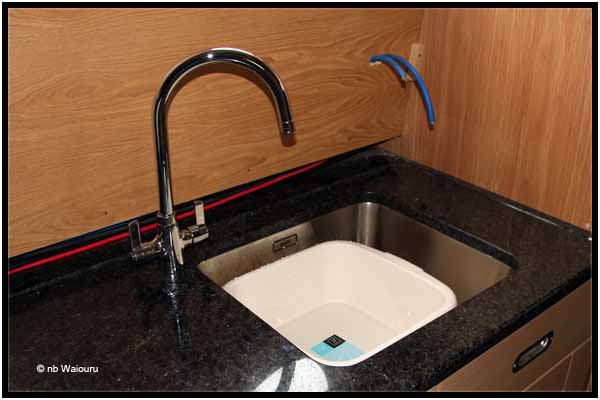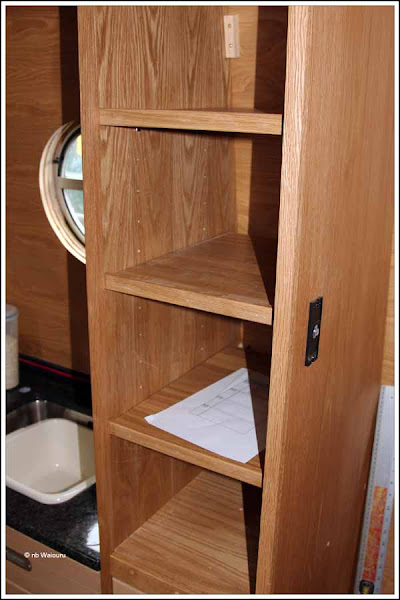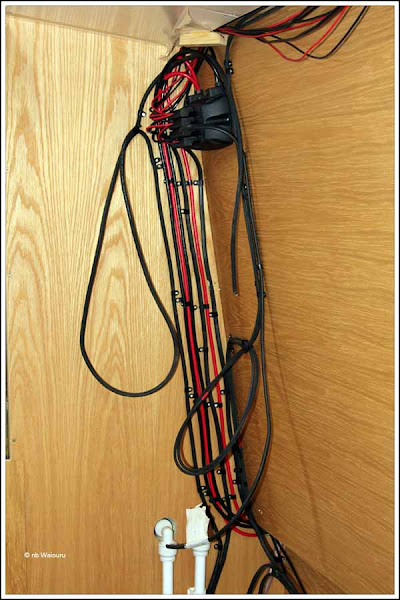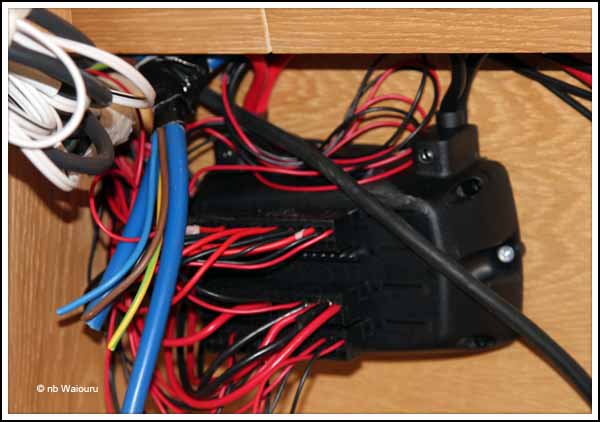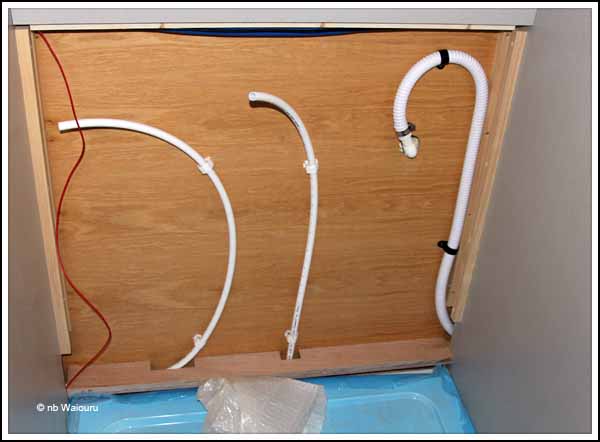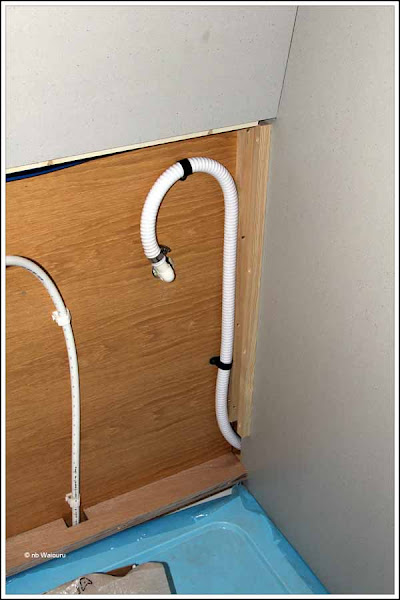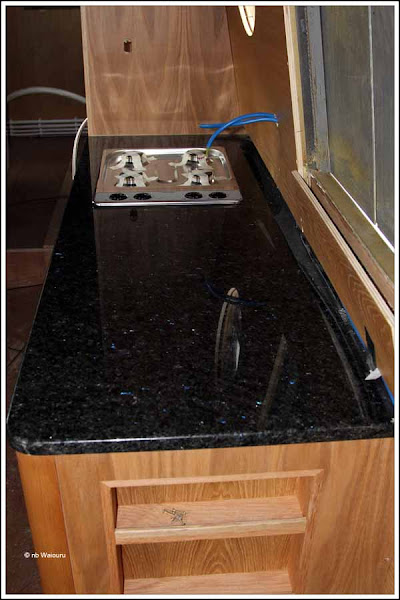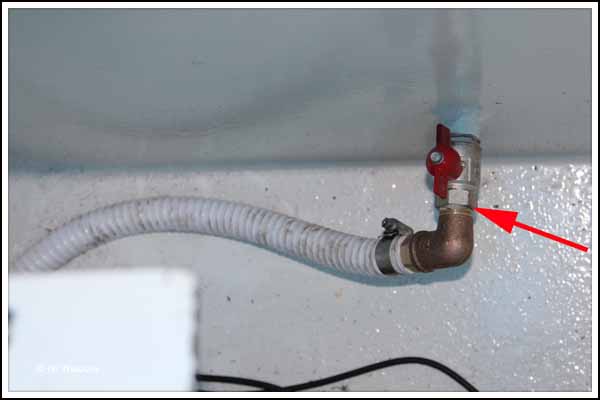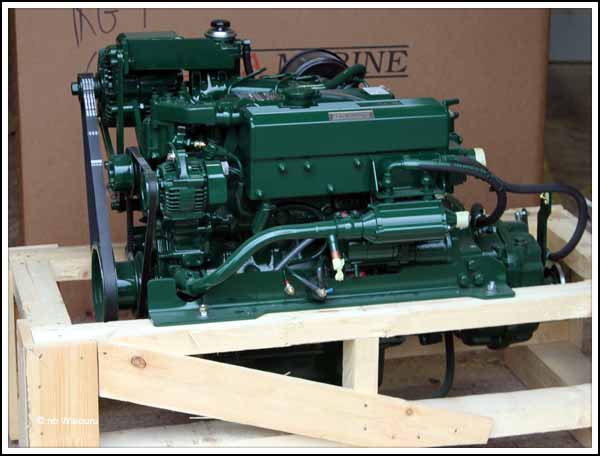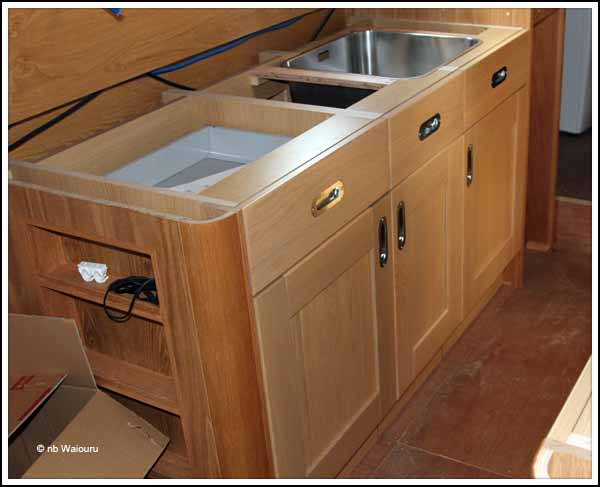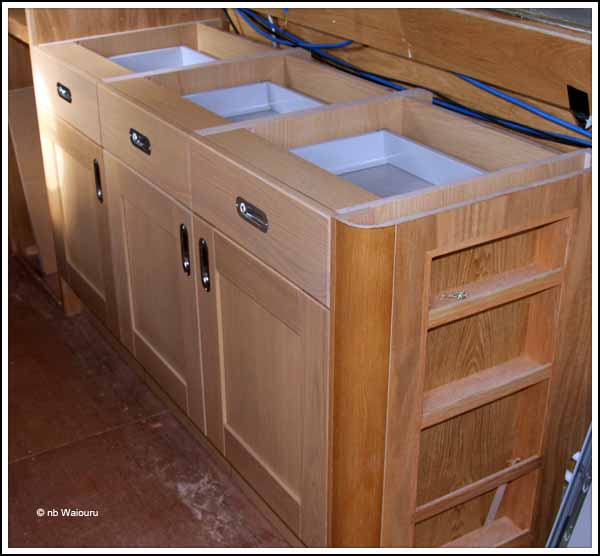Another milestone was achieved today when Nick and Andy commissioned the gas system. We have opted for a basic gas regulator rather than a more expensive automatic change-over system. I’m more comfortable with this as it will enable me to monitor the gas usage. Albeit I’ll need to change over the bottles each time it runs out.
Testing the gas system for leaks
The 12v gas ignitors and the fridge are both capable of generating very high voltage “spikes” which might potentially damage the Empirbus system. In an effort to avoid this the electrical supply for the gas and fridge will be run via a relay. The Empirbus system will control the relay and the 12v will come directly from the batteries via a fuse.
Richard has made an oak mounting block for the Empirbus 8 membrane galley switch.
The switch controls the following:
- galley lighting (two way)
- saloon lighting (two way
- fridge isolation
- gas electic ignition isolation
- water pump isolation
- toilet isolation
- spare (2)
One of the advantages of the Empirbus system is the spare switches can be used without having to run any additional wiring.
Another of these 8 membrane switches will go in the back cabin on the instrument panel. It will control:
- rear cabin light switch (2 way)
- main 12v isolation switch
- inverter isolation
- Hurricane heater isolation
- LED light switch for the rear steps
- freezer isolation
- fuse reset
- spare (1)
Darren masked up the shower joins yesterday and today Nick sealed most of the joins with a special marine quality sealer. It’s not silicone based, which would eventually degrade and peel. This product is far more durable. It’s grey in colour which has matched quite well with the formica panels. I was quite impressed with Nick’s attention to detail when applying the sealer and the thorough way he cleaned the shower tray afterwards.
The shower will be finished on Sunday and should be ready to use that night.
Meanwhile Richard and James have been beavering away in the back cabin. I managed to take a couple of photos of their efforts when they were back in the workshop cutting more timber.
Photo taken through the back hatch
We now have a new partition which is obscuring the partition between the galley and the back cabin (the panel with the black switch on it). The compartment between the two partitions is for the workstation and will have a small fold down desk. The shelf with the screwdriver on it in the photo is where the freezer will go. The washing machine will be underneath. The freezer is slightly longer than the width of the washing machine so there will be a narrow compartment beside the washing machine. No doubt we will find a use for it. Above the freezer will be a large storage locker.
I managed to locate and cut the last (I hope) of the skin fitting holes below the gunwale. This one is for the washing machine. After the skin fitting had been installed I made a start on the swans neck for the waste.
Washing machine cavity
The long (left) loop of cable is for the 240v power sockets that will be mounted high on the wall in the adjacent workstation. The smaller loop of cable to the right is for the washing machine power socket which will be mounted under the gunwale.
I’ve also been increasing the number of water pipe support clips. Nick pointed out once we had hot water circulating the pipes would start to sag unless they were supported every 300mm.
No doubt I’ll find more to keep myself occupied tomorrow. ![]()







